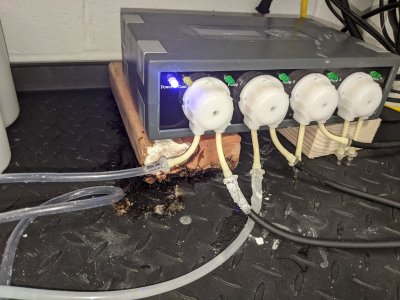Randy Holmes-Farley
Reef Chemist
View Badges
Staff member
Super Moderator
Excellence Award
Expert Contributor
Article Contributor
R2R Research
My Tank Thread
- Joined
- Sep 5, 2014
- Messages
- 67,160
- Reaction score
- 63,517
Thanks, I doubled check against some of those to make sure. The question I had was really around the other side reactions with the Strong C that is mixed in.
The other component is Strong C which is made of iodide and fluoride per AF. It states is raises the potassium my guess its made from potassium iodide and potassium fluoride.

None of those would seem to be an issue, and in general, anything that normally goes into an alk part that uses bicarbonate or carbonate can likely go in hydroxide.


















